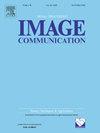Sparse modeling for image inpainting: A multi-scale morphological patch-based k-SVD and group-based PCA
IF 2.7
3区 工程技术
Q2 ENGINEERING, ELECTRICAL & ELECTRONIC
引用次数: 0
Abstract
Image inpainting, a crucial task in image restoration, aims to reconstruct highly degraded images with missing pixels while preserving structural and textural integrity. Traditional patch-based and group-based sparse representation methods often struggle with visual artifacts and over-smoothing, limiting their effectiveness. To address these challenges, we propose a novel multi-scale morphological patch-based and group-based sparse representation learning approach for image inpainting. Our method enhances image inpainting by integrating morphological patch-based sparse representation (M-PSR) learning using k-singular value decomposition (k-SVD) and group-based sparse representation using principal component analysis (PCA) to construct adaptive dictionaries for improved reconstruction accuracy. Additionally, we employ the alternating direction method of multipliers (ADMM) to optimize the integration of morphological patch and group based sparse representations, enhancing restoration quality. Extensive experiments on various degraded images demonstrate that our approach outperforms state-of-the-art methods in terms of the peak signal-to-noise ratio (PSNR) and the structural similarity index measure (SSIM). The proposed method effectively reconstructs images corrupted by missing pixels, scratches, and text inlays, achieving superior structural coherence and perceptual quality. This work contributes a robust and efficient solution for image inpainting, offering significant advances in sparse modeling and morphological image processing.
图像绘制的稀疏建模:基于多尺度形态学斑块的k-SVD和基于分组的PCA
图像修复是图像修复中的一项关键任务,其目的是在保持图像结构和纹理完整性的同时,重建缺失像素的高度退化图像。传统的基于补丁和基于组的稀疏表示方法经常与视觉伪影和过度平滑作斗争,限制了它们的有效性。为了解决这些挑战,我们提出了一种新的基于多尺度形态学斑块和基于组的稀疏表示学习方法。我们的方法通过结合基于形态学补丁的稀疏表示(M-PSR)学习(使用k-奇异值分解(k-SVD))和基于群的稀疏表示(使用主成分分析(PCA))来构建自适应字典以提高重建精度,从而增强图像绘制。此外,我们采用交替方向乘法器(ADMM)优化形态学斑块和基于群的稀疏表示的整合,提高恢复质量。在各种退化图像上进行的大量实验表明,我们的方法在峰值信噪比(PSNR)和结构相似性指数测量(SSIM)方面优于最先进的方法。该方法有效地重建了被缺失像素、划痕和文本嵌入损坏的图像,实现了优异的结构一致性和感知质量。这项工作为图像绘制提供了一个鲁棒和高效的解决方案,在稀疏建模和形态学图像处理方面取得了重大进展。
本文章由计算机程序翻译,如有差异,请以英文原文为准。
求助全文
约1分钟内获得全文
求助全文
来源期刊

Signal Processing-Image Communication
工程技术-工程:电子与电气
CiteScore
8.40
自引率
2.90%
发文量
138
审稿时长
5.2 months
期刊介绍:
Signal Processing: Image Communication is an international journal for the development of the theory and practice of image communication. Its primary objectives are the following:
To present a forum for the advancement of theory and practice of image communication.
To stimulate cross-fertilization between areas similar in nature which have traditionally been separated, for example, various aspects of visual communications and information systems.
To contribute to a rapid information exchange between the industrial and academic environments.
The editorial policy and the technical content of the journal are the responsibility of the Editor-in-Chief, the Area Editors and the Advisory Editors. The Journal is self-supporting from subscription income and contains a minimum amount of advertisements. Advertisements are subject to the prior approval of the Editor-in-Chief. The journal welcomes contributions from every country in the world.
Signal Processing: Image Communication publishes articles relating to aspects of the design, implementation and use of image communication systems. The journal features original research work, tutorial and review articles, and accounts of practical developments.
Subjects of interest include image/video coding, 3D video representations and compression, 3D graphics and animation compression, HDTV and 3DTV systems, video adaptation, video over IP, peer-to-peer video networking, interactive visual communication, multi-user video conferencing, wireless video broadcasting and communication, visual surveillance, 2D and 3D image/video quality measures, pre/post processing, video restoration and super-resolution, multi-camera video analysis, motion analysis, content-based image/video indexing and retrieval, face and gesture processing, video synthesis, 2D and 3D image/video acquisition and display technologies, architectures for image/video processing and communication.
 求助内容:
求助内容: 应助结果提醒方式:
应助结果提醒方式:


